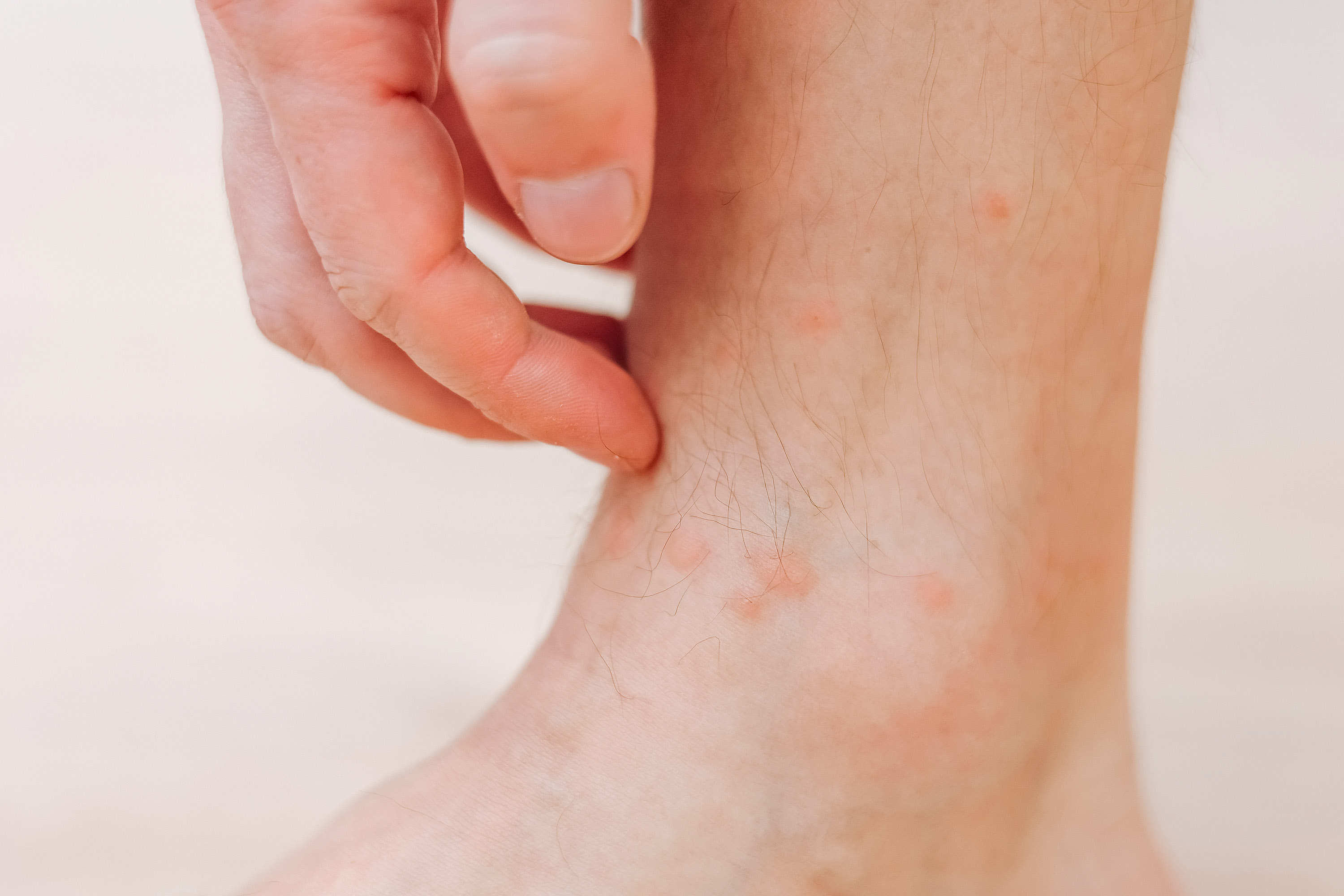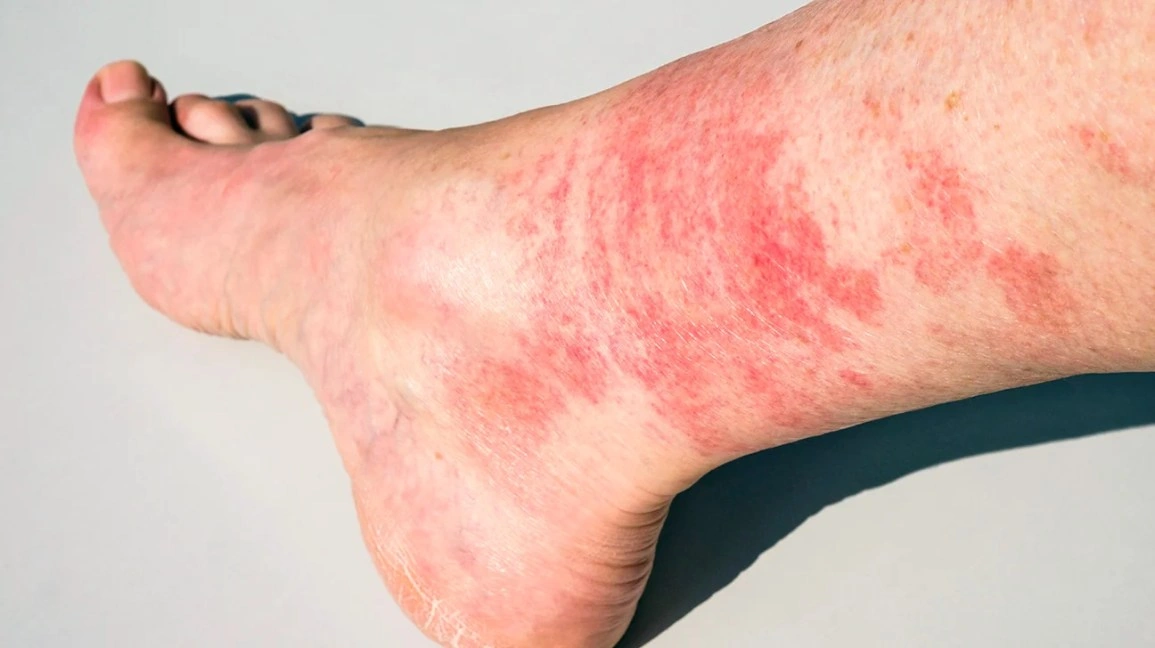
When It Shows Up
Have you ever flopped onto the couch after a long day, yanked off your socks—and there it is. A red rash on your lower legs… parked right above your ankles like some unwelcome guest? Maybe you mutter, “Ugh. Is this normal?” Let’s be real: any new patch of red, especially when it’s itchy or bumpy, is enough to make you scroll skincare Google at 1 a.m.
Don’t worry. You’re in the right place. I can totally relate—last summer, after a marathon gardening session, my own calves got so blotchy it looked like abstract art. (Hot tip: tall socks. Shoulda worn ’em.) But the truth? A rash down there can mean a bunch of things, from meh to must-see-a-doctor. Let’s talk… and yes, we’ll peek at plenty of pictures of skin rashes on legs so you don’t have to go it alone.
What’s Up With Lower Leg Rashes?
Okay—so why does the lower leg, especially the space just above your ankle, get so much drama? Well, if you think of your body like a bustling little city, your calves and ankles are like the parts of town with all the traffic jams. Everything pools there when you sit, stand, walk, or… let’s be honest, snack on the couch for hours. So, that area’s extra sensitive to even tiny changes.
Is It Something in Your Veins?
A super-common reason for a stubborn red rash in that exact spot? It’s called “stasis dermatitis.” Sounds intense, I know—but it’s really your skin’s way of saying, “Hey, circulation’s a bit sluggish down here!”
Think: swollen, itchy, almost shiny patches—sometimes with a few scales or bumps tossed in for extra fun. I’ve seen it hit friends who stand a lot at work or do the #WFH thing crosslegged for hours. In fact, last winter, my neighbor swore she had a weird bug bite, but it turned out to be this exact thing—her doc said the combo of varicose veins and sitting for Zoom calls all day was the culprit.
If you want to see what stasis dermatitis really looks like—not just the picture-perfect stock photo stuff—check out pictures of skin rashes on lower legs for genuine examples (trust me, much more useful than a Google image rabbit hole).
Hint: What It Looks Like Side-by-Side
| Stasis Dermatitis | Typical Appearance |
|---|---|
| Early stage | Red, itchy, slightly swollen above ankles; may be flaky |
| Later stage | Brownish, thickened patches; possible sores or blisters |
Sound familiar? If your legs are also puffy or you see twisty veins nearby, stasis dermatitis jumps way up the suspect listbased on the dermatology experts at Skinsight. It’s not dangerous on its own, but it can be a pain—literally. (And worth getting checked out, honestly.)
Allergies & Annoyances: Is Your Skin Protesting?
Alright, maybe your circulation’s fine. Then what? The next sneaky suspect: contact dermatitis—a fancy way of saying your skin’s angry about something it touched.
Maybe you tried a new lotion or detergent. Maybe grass brushed your ankles on a walk, or you broke in fresh sneakers. Suddenly, you get red, angry patches or streaks, sometimes with tiny blisters or dry scales. (And the itching. Don’t get me started on the itching.)
It happened to my sister: she switched to a “eco” laundry detergent and bam—her calves broke out right where her socks hugged tight. Fun, right?
Quick Table: Rash Clues
| Rash Clue | What It Might Mean |
|---|---|
| Sudden red, bumpy streaks | Allergic contact (plants, soaps, dyes) |
| Dry, irritated red patches | Irritant contact (friction, sweat, certain fabrics) |
| Scaly, oval patches or dark areas on brown/black skin | Chronic eczema or stasis dermatitis |
If you’re squinting at your legs and wondering, “Is this my rash?” peek at pictures of skin rashes on legs and see if anything matches. Pro tip: snap a photo on your phone so you can show your doc later, too.
Is It Infection—or Just Bad Luck?
If you’re reading this thinking, “Rash sounds too boring for what I’ve got—mine’s hot, painful, and spreading,” take a second to check if you also have fever, swelling, or, you know, can hardly walk. Because sometimes a red rash on lower legs above ankles pictures isn’t just a nuisance; it’s a flashing neon sign for something bigger, like cellulitis (a deep skin infection).
Real talk: a friend of mine once shrugged off a small rash above his sock line after a hike. Within two days, his leg looked like he’d dunked it in red paint—hot, swollen, and throbbing. Spoiler: he needed antibiotics, fast. Luckily he got help before it got scary… but it was a wakeup call for everyone in my group chat.
If you’ve got a warm, expanding rash, sometimes with blisters or an oozing edge, and maybe chills? Don’t wait. Call your doctor. Seriously. According to Healthline’s medical review, quick action is how you avoid bigger problems.
Rash Roulette: When It’s Something Chronic
So, some rashes just show up and fade after a week (lucky you!). Others… they like to linger, barely changing, possibly getting worse during winter or after a long work shift. That’s when you might be dealing with a chronic thing—think eczema, psoriasis, or good old varicose eczema (sometimes called “venous eczema”).
It doesn’t always itch much, and it might look brown, greyish, or purplish—especially on darker skin tones. Sometimes the skin gets thick and “woody,” or cracks open in little sores, especially around those old veins you wish you could hide in summer.
If this all sounds weirdly familiar, I’d definitely recommend checking a series of pictures of skin rashes on lower legs and pictures of skin rashes on legs—recognizing what’s “normal for you” versus “time to ask for help” is half the battle.
Living with It: Quick Wins & Real Relief
Alright, let’s get practical. Your legs are in rebellion—but you still have to go to work, chase kids, or run errands, right? Here’s how to make that rash behave (or at least, stop screaming at you):
- Prop up your feet: Sounds basic, but elevating your legs helps move that tired blood back up and can shrink redness from stasis dermatitis. Try 20 minutes while you scroll TikTok or answer emails.
- Creams — but keep it chill: Go for unscented moisturizers or plain old petroleum jelly for daily use. If itching’s wild, 1% hydrocortisone cream from the drugstore will usually calm things (just don’t go wild with it for more than a week or two unless your doctor says so).
- Skip the hot showers: They feel good, but they strip your skin’s natural barrier—hello, more dryness and irritation.
- Stay loose: Tight socks = friction central. Opt for looser socks or “seamless” athletic ones that don’t dig in above the ankle. I’ve worn through way too many pairs in pursuit of comfort after a sweat-fest run.
If you want a mini reference table for home vs. doctor care, here’s what I tell my family:
| If it’s mild (dry, a bit red, mostly itchy): | If it’s severe (spreading, oozing, hot): |
|---|---|
| Moisturize; avoid triggers; elevate legs; OTC cream | Call your doctor or urgent care; you may need prescription meds |
Should You Worry? Or Wait It Out?
Honest moment here: not every red rash is an emergency. Your legs do an impossible job—carrying you everywhere, dealing with all your shoes, braving razor nicks or weird pool chemicals. Sometimes a little irritation, especially after standing, isn’t a crisis.
But if your rash is new, spreading, or making you feel sick… trust your gut and check in with your doctor. Especially if you see swelling that’s new for you, brownish stains, blisters, or sores that won’t heal.
And if you’ve got history with varicose veins, clots, repeated swelling, or sensitive skin? You might be especially at risk for things like stasis dermatitis or even ulcers in the long run—which, believe me, are easier to prevent than to treat laterper NHS guidelines on varicose eczema.
Tracking It (So You Don’t Stress)
Here’s something I started doing after my own garden incident: take a quick pic when you notice a new rash. Then check a resource like pictures of skin rashes on lower legs to compare over a few days.
No, it’s not about self-diagnosing or spiraling. It’s just helpful—especially if your rash’s color or shape changes, or you start to see blistering or big patches instead of smaller ones. Doctors love clear photos, and honestly, so do you when you’re trying to remember “was this bigger than last night?”
Let’s Wrap This Up… and Cheer You On
So, what’s the real story when you spot that red rash on lower legs above ankles pictures? Most often, it’s your body asking for a little help with circulation, less friction, or maybe less detergent (!). Those angry splotches, itchy swirls and stubborn dry patches? They’re a nudge—as annoying as they are—to check in, slow down, and treat your skin like it matters. Because honestly… it does.
Keep it simple: moisturize, avoid things that bug your skin, prop up your legs, and peek at real pictures of skin rashes on legs or pictures of skin rashes on lower legs whenever you need reassurance or a starting point.
If you shoulder through and things don’t get better (or get any worse), don’t wait. Reach out. Sometimes what looks like just a surface issue is your signal to rest, see your doc, or even rethink your self-care routine. And if you’ve had this, or dealt with the mystery rash before—share your story below, or tell a friend. You never know who’ll need that little nudge. Our legs do a lot for us. Let’s give them a hand… or at least a good moisturizer and a moment off-duty now and then.


















Leave a Reply
You must be logged in to post a comment.